Explore the functionality of the latest version of Allplan 2022
3D Navigation improvements
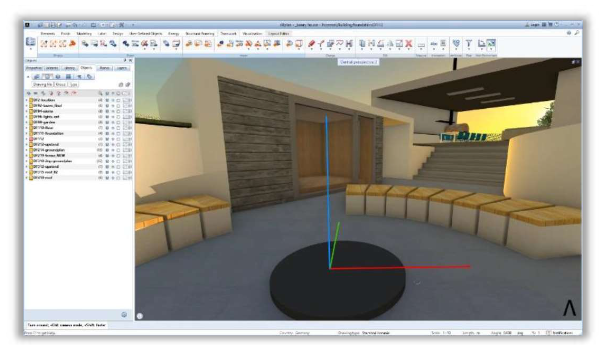
To keep the overview of large and complex 3D models, a software must provide suitable tools to navigate the model. We implemented a more intuitive coordination for a smooth presentation mode in relation to the model size. A more precise and interactive navigation is achieved by being able to rotate directly around a point on an element. This is great for getting impressions at a specific location or inspecting details from different angles.
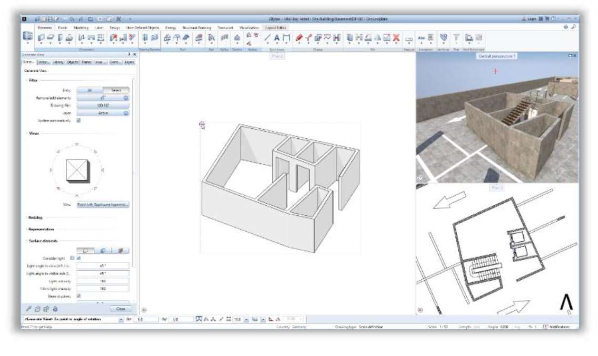
Improved Views & Sections workflows
Complex models consist of many elements, in certain workflows those may be unnecessary to see. To communicate the subset of a model through a drawing, it must be possible to create a snapshot of this selection. We now provide the possibility to focus on specific elements via the expanded views and section functionality. This supports clearer communication to all involved parties.
Visual Scripting
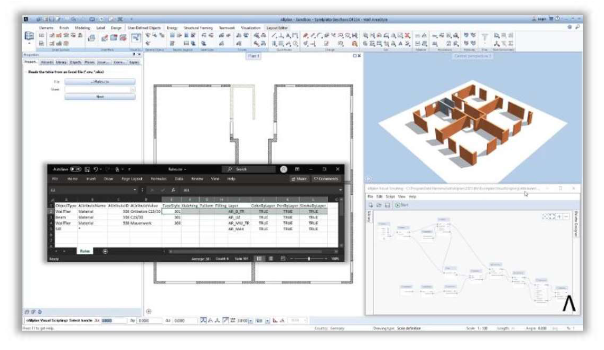
1. Rule-Based Modification of Visual Representation
The AEC industry is fragmented, and many different parties add to a federated model. When taking over the work of another party to base your own work on, you usually receive model data which observes different representation standards. For example, after importing IFC files, it is a tedious and painful process to change both the 2D and 3D visual representation of many building elements based on their attribute values. This repetitive work is necessary for high-quality and understandable drawings. With Visual Scripting, we can speed up the whole process and avoid mistakes.
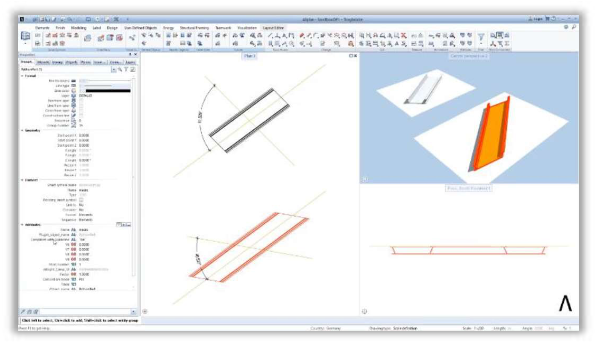
2. Enhance Buildability with Parametric Objects
Checking the geometrical compliance of an object with guidelines is often based on manual interactions as users do not get feedback from the objects themselves. This is time-consuming, error-prone, and repetitive. Especially when there are many objects to check. With Visual Scripting, we can create parametric objects, which can provide feedback about the compliance and therefore enhances the buildability.

3. Custom Parametric Function
Design is a non-linear process with many changes along the way. Combining Allplans powerful 3D modeling capabilities with Visual Scripting provides the flexibility users need in creating parametric 3D objects. With Visual Scripting, we can break the limitations of built-in functions to make them parametric to avoid recreating from scratch again. In this video, we create a parametric sweep function as an example. It shows how easy and quick it could be.
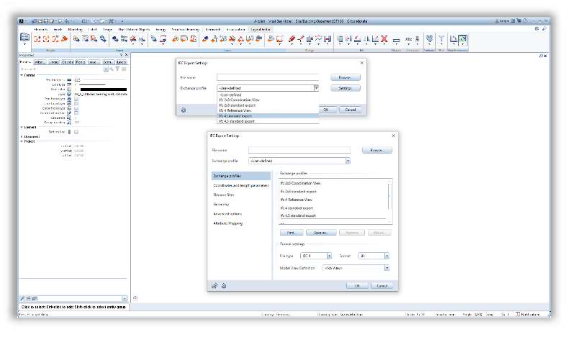
Exchange profiles for IFC
Exchange data between different applications, is part of the OpenBIM workflow. To achieve a high quality, open exchange, the IFC standard was developed by buildingSMART. As workflows and more disciplines support the open exchange, the IFC interface needs continuous development. With the newest version of IFC 4.3 we are introducing enhancements for data exchange workflows. Now it is possible to use predefined profiles, created according to buildingSMART standards. At the same time, we provide an enhanced and simplified user interface.
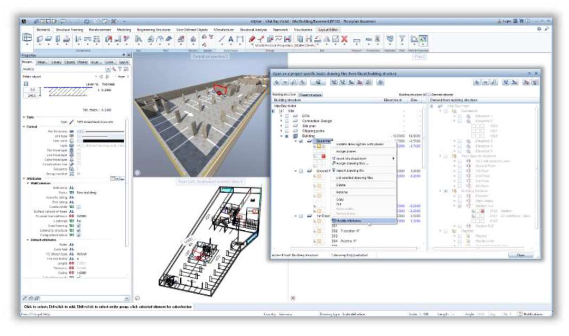
Fast and easy IFC file preparation
IFC has become an important and widely used standard. Compliance with a BEP and buildingSMART standards in terms of attribute sets needs to be supported by an openBIM application. We provide an easy overview of all attributes and property sets for each element. Furthermore, we added the possibility to assign attributes to the topological elements of IfcSite, IfcBuilding and IfcBuildingStorey in the building structure.
ALLPLAN BIMPLUS
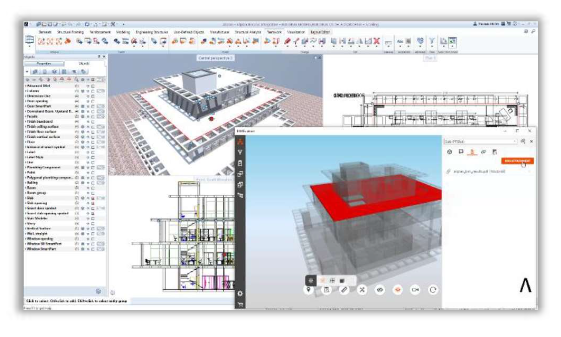
Working with Bimplus attachments in Allplan
Information, the ‘I’ in BIM, is far beyond simple properties. Documents and other attachments are relevant for a successful project as well, and they need to be easy to access. The Bimplus integration in Allplan offers an easy way to attach and access additional information for any object. Stored in a common data environment (CDE) like Bimplus, these attachments are the reliable single source of truth for all project participants and aid to minimize errors and maximize efficiency.
ALLPLAN BRIDGE

Precast Girder Bridges New specialized modeling approach
The original parametric modeling approach in Allplan Bridge is based on geometry following a road or a bridge axis. For some bridge types, such as precast girder bridges, the geometry of the superstructure, is not governed by the geometry of the axis but rather by the geometry of the substructure and their position along the axis. In the 2022 version a further modeling approach is introduced that enables users to create an exact geometry of precast girder bridges easily and quickly. First the substructure with or without foundations is defined. In the next step with few simple click’s girders (Link girders) are positioned on top of the substructure. Following this the deck is defined using the usual approach placing it relative to an axis. The final step is creating the haunch filling the space between the girder and the deck. The shape of the haunch is defined directly in the section of the precast girder and the 3D geometry is generated by newly introduced 3D Boolean operations. This new modeling approach is tailored for precast and steel girder bridges. The modeling process for precast girder bridges contains of the following steps: Creating axes, defining a cross-section, designing a template, modeling a substructure, assembling girders, creating a deck, composing the haunch, finalizing the bridge structure. To enable this new workflow several new features (i.e. Link Girders, Booleans) were implemented but they can be also used to simplify modeling and enable the workflow enhancement for other bridge types. Bridge Precast Girder Bridges New specialized modeling approach (By Gregor Strekelj) The original parametric modeling approach in Allplan Bridge is based on geometry following a road or a bridge axis. For some bridge types, such as precast girder bridges, the geometry of the superstructure, is not governed by the geometry of the axis but rather by the geometry of the substructure and their position along the axis. In the 2022 version a further modeling approach is introduced that enables users to create an exact geometry of precast girder bridges easily and quickly. First the substructure with or without foundations is defined. In the (Link girders) are positioned on top of the substructure. Following this the deck is defined using the usual approach placing it relative to an axis. The final step is creating the haunch filling the space between the girder and the deck. The shape of the haunch is defined directly in the section of the precast girder and the 3D geometry is generated by newly introduced 3D Boolean operations. This new modeling approach is tailored for precast and steel girder bridges. The modeling process for precast girder bridges contains of the following steps: Creating axes, defining a cross-section, designing a template, modeling a substructure, assembling girders, creating a deck, composing the haunch, finalizing the bridge structure. To enable this new workflow several new features (i.e. Link Girders, Booleans) were implemented but they can be also used to simplify modeling and enable the workflow enhancement for other bridge types.
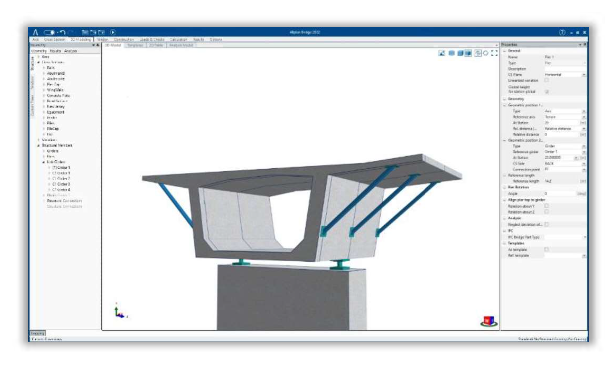
Link Girders
Link Girders are 3D linear elements positioned between two 3D points. The 3D points are created by reference points defined in cross-sections used in girders or piers. These two 3D points define the local axis of the girder and from here on the general approach used in Allplan Bridge is applicable – an arbitrary cross-section can be assigned and, in this way, also any variation can be modeled. This allows users to use Link girders in many different ways. Link girder is more than just a tool which can be used for precast girders, as mentioned above. This new element type has application in modeling of steel girders, overhang supports, different bracings and many more.

Advanced Pier Definition
Piers could be defined in Allplan Bridge only relative to the girder. With the new version piers can be positioned also relative to the axis, relative between two axes and relative between an axis and a girder. Furthermore, the offset from the axis can be either defined as a relative distance or it can be also defined as an absolute height. This gives the users the complete freedom to choose the input that is most suitable for them depending on the data provided. For example, the new functionality allows the user to easily place the pier parametrically between the terrain level and the main girder. After changing the axis, or if the height of the main girder is modified, the pier height will be adjusted as well, since the bottom of the pier is fixed with the global height, or it is relative to the terrain axis. This approach speeds up the modeling and enables proper adjustments of the model after changes.
New types of stations – More convenient data input options
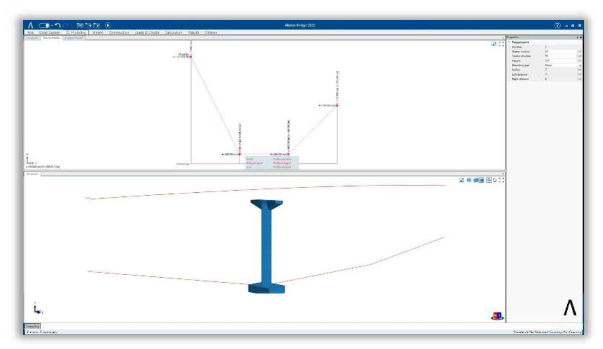
According to the customer needs, new types of stations have been introduced for all element types, girders, piers, link girders and slabs. In Allplan Bridge, the following types of stations are now available: Local to the beginning of an element, local to the end of an element, global station, absolute height and relative station. In addition to this, the input can be defined in such a way, that if modifications need to be introduced in the model, the dependent and referenced bridge elements are automatically adjusted in a proper way. For example, very often the pier shape is the same or similar for different piers in the same bridge. Normally the pier hammer head does not change and the total height of pier varies.
By using templates and new station types this situation can be solved easily. The geometry of the pier top is fixed by using the station type „Local-End” and on the other side the pier bottom is „free” and can automatically adjust when positioning the pier template on the terrain axis.
Custom tree
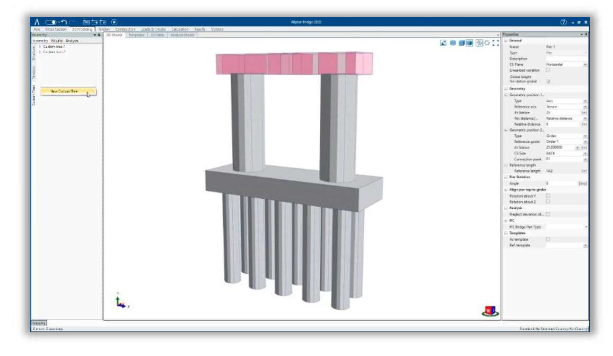
Allplan Bridge enables users to organize structural members in any order. Navigation tree is used for grouping the same element types. New option „Custom trees” supports mutliple workflows, and it adding more flexibility and freedom to the work.
It is possible to use the initial navigation tree for generating structural members and to organize them arbitrarily in a subsequent step in the custom tree or to generate structural members directly from the navigation tree. The same structural member can be referenced multiple times due to the existing link between the custom tree item and the object from the initial tree. It is possible to have multiple custom trees and organize the same data in two or more different ways.
AASHTO LRFD
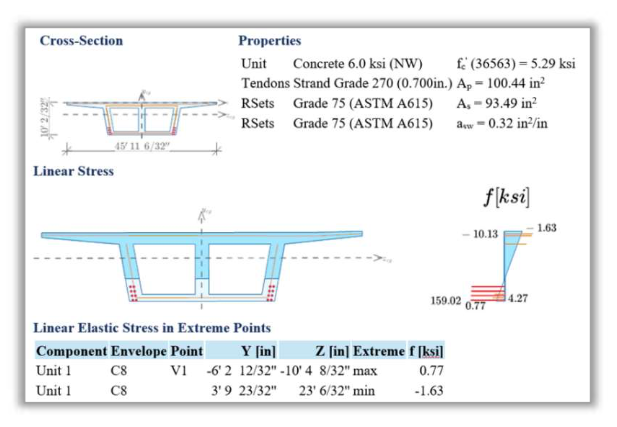
The implemented version of AASHTO LRFD 9 covers strength limit states, service limit states, and fatigue limit state of reinforced and prestressed sections with the check of some detailing rules for designed reinforcement. This provides comprehensive design and code-checking of concrete bridges based on a sectional approach. The overall process takes over previously calculated internal forces based on the construction schedule considering creep and shrinkage calculations based on AASHTO functions. They are applied on a section with timedependent material and cross-sectional properties. This means that concrete hardening in time is considered as well as the state of the section (active prestressing tendons, subtraction of ducts, grouting, …).
The effective flange widths (shear lag) are considered based on the user-input in cross-section definition that limits this effect for bending moments. On top of that, piers are treated as compression members with different detailing rules applied. Calculations of slenderness and factored magnifying secondorder effects are carried out for applied buckling lengths. The beam sections checked for stress limit state use the slenderness as well considering the wall slenderness defined in stress points of the section. To complement the design and checking procedures, the support of AASHTO combination types, exposure conditions (including exposure factor), US bar sizes, and imperial units were added.
Skewed Bridges
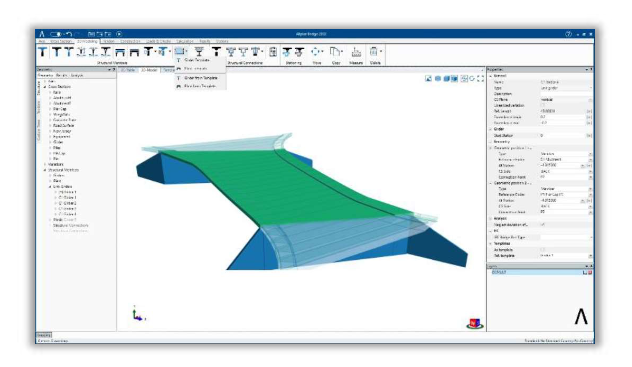
Bridges are very often not placed orthogonally to the existing barriers (i.e. road) but rather with a certain angle. This usually brings to the skew begin and end of such bridges. The geometry of the skew section is not only governed by the cross-section normal to the bridge axis but also by the variation of the cross-section and elevation of the bridge axis. This soon becomes more complex if the elevation and variations are not linear. The new version of Allplan Bridge provides a solution for these types od bridges. It consists of two steps. In the first step a „master” of a girder or deck is generated where the geometry of the bridge with all the details is generated. In the second step the new function „Skew” is being used where created „master” is used for generation of the final geometry where only the position of the skew and the angle must be set.
IFC4.3
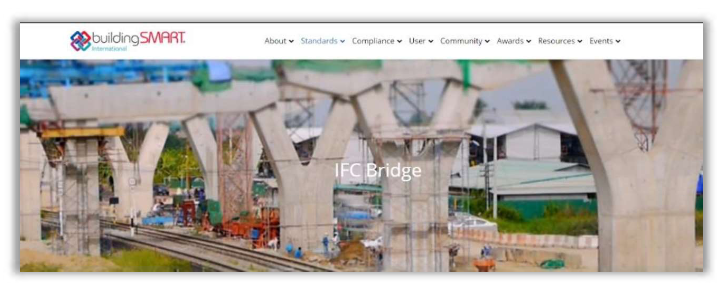
IFC schema has been extended with new definitions with IFC 4.3 that includes now bridges, roads and rails in order to better explain and rationally define the specific details related to the objects in infrastructure sector. This new schema is supported by both Allplan Engineering and Allplan Bridge.
In the domain of bridges, Bridge type and Bridge part type are used with enhanced object types to represent respective bridge elements. Beside the geometry and material, it is now possible in Allplan Bridge to use following new definitions:
- Bridge project —> IfcBridgeType (e.g.: Girder Bridge, Arched Bridge)
- Bridge subdivision —> IfcBridgePartType ( e.g.: Abutment, Deck, Pier)
- Bridge Parts —> IfcObject and IfcObjectType (e.g.: IfcPile: Bored, Driven…; IfcBeam: Beam, Piercap…)
- Object types —> IfcName (user defined explanatory name)
Additional IFC attributes necessary for the project can be further set in Allplan Engineering and easily transferred between objects in the same project or in different projects. All this improves the quality of the IFC model and results in smoother BIM Collaboration in bridge projects.

Accompanying Axis
New axis type – accompanying axis can be defined parametrically with an offset to the main axis. It is defined by a constant or variable offset (distance described in a table) in the horizontal and vertical direction relative to the main axis. With this it is easily possible to model bridges that have an axis which is in a certain relation to the road axis. Additionally, using this functionality side curbs can be modeled in a more comfortable way. Since Allplan Bridge is often used for modeling of other structures, for example retaining walls, and this new axis type makes modeling of such structures even more convenient.

